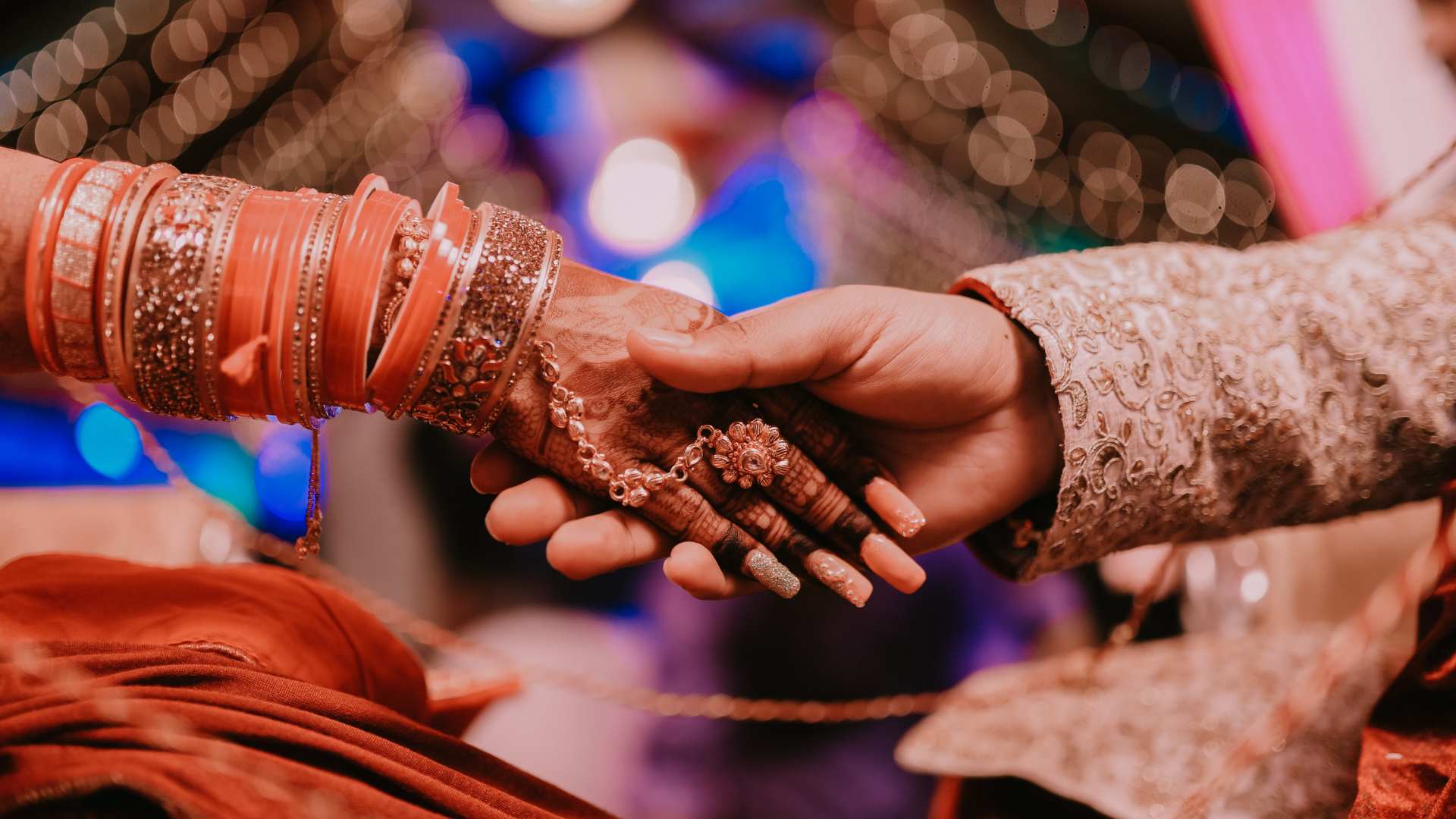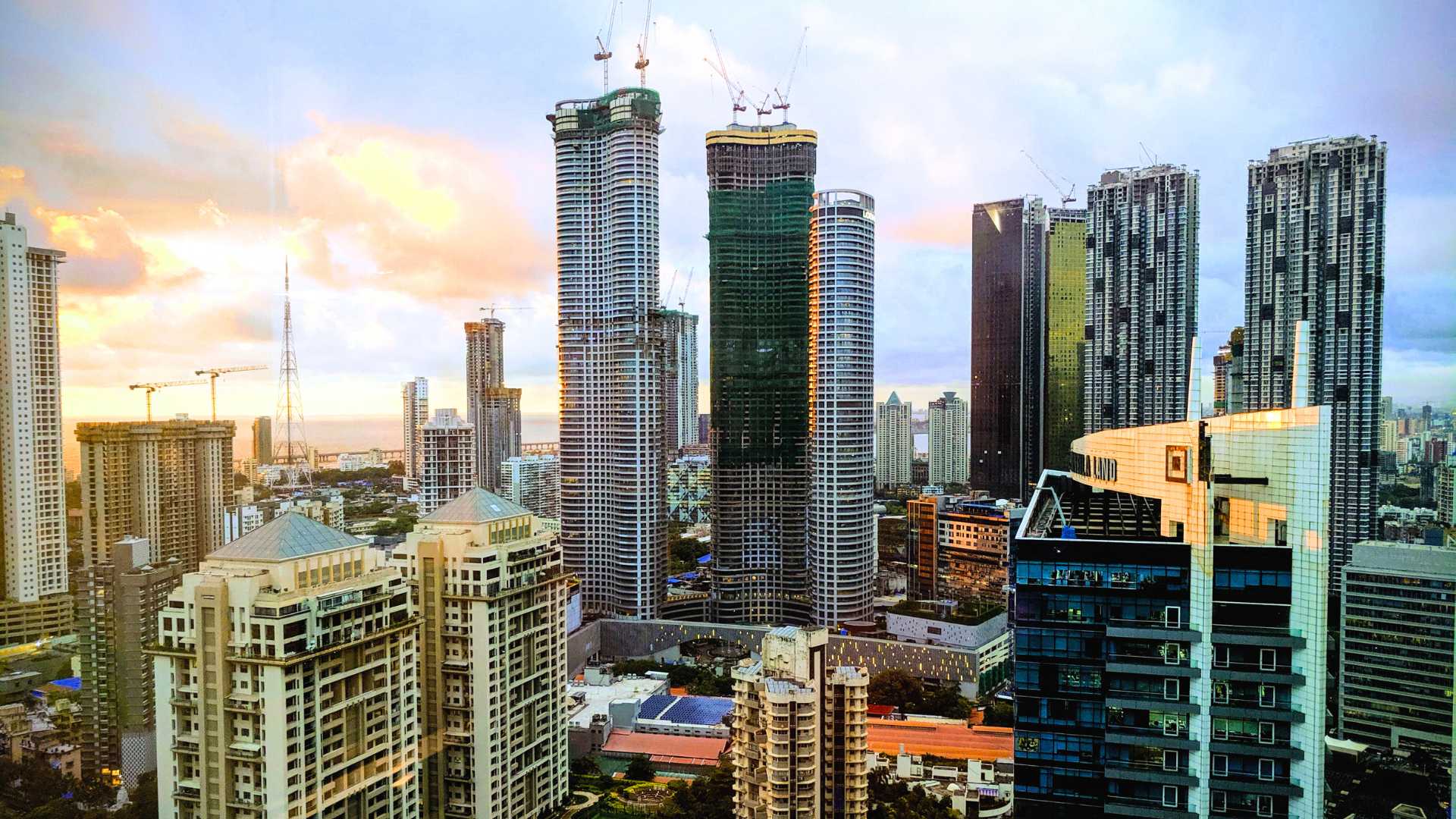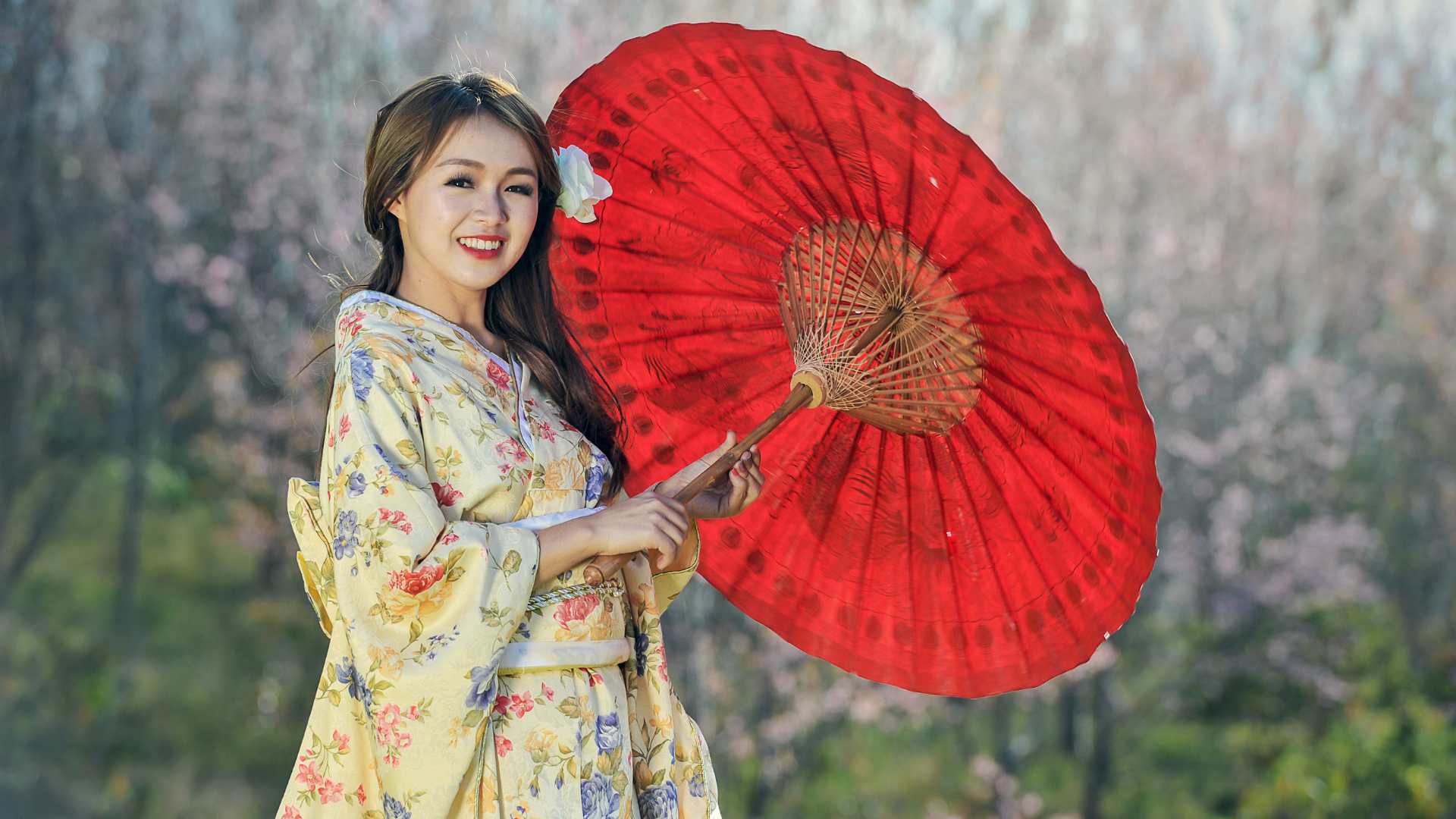Table of Contents
ToggleArunachal Pradesh, located in northeastern India, is known for its stunning landscapes and vibrant cultural diversity. Home to various indigenous tribes, each community has its unique traditions, and their attire reflects this rich heritage.
The traditional dresses of Arunachal Pradesh are as varied as its people, with each tribe showcasing unique patterns, colors, and styles that are deeply tied to their cultural identity.
In this article, we explore the top 10 traditional dresses worn by both men and women of Arunachal Pradesh, providing a glimpse into their customs and way of life.
What Makes the Traditional Dress of Arunachal Pradesh Unique?
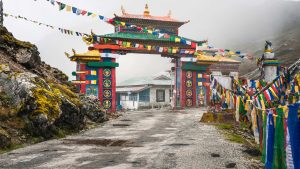
Arunachal Pradesh, known for its diverse tribal cultures, showcases a vibrant variety of traditional attire. Each of the state’s tribes has a distinct identity expressed through clothing.
The uniqueness of these traditional dresses lies in their handcrafted designs, use of locally sourced materials such as cotton, wool, and silk, and their deep cultural symbolism.
Many dresses feature geometric patterns and tribal motifs passed down for generations, reflecting the tribal heritage and connection to nature.
Traditional attire is not just about aesthetics; it plays an essential role in tribal festivals, social events, and rituals.
Intricate beadwork, bamboo hats, and animal motifs are some features that set Arunachal’s tribal clothing apart from other regions in India.
How Do the Different Tribes of Arunachal Pradesh Influence Their Traditional Clothing?
With over 26 major tribes and many sub-tribes, Arunachal Pradesh’s traditional attire reflects its diversity. Each tribe, including the Monpa, Nyishi, Apatani, Galo, and Mishmi, has its distinct dress styles, influenced by their geographical location, climate, and cultural heritage.
For instance, the Monpa tribe in the high-altitude regions prefers woolen clothing for warmth, while the Nyishi tribe showcases their warrior heritage through bamboo hats and bold accessories.
Festivals like Losar, Nyokum, and Dree play a significant role in determining the style and significance of the attire worn during these celebrations. These clothing styles are designed for beauty and to reflect tribal identity, status, and social roles within the community.
What Role Does Handloom Weaving Play in Arunachal Pradesh’s Traditional Dresses?
Handloom weaving is an integral part of Arunachal Pradesh’s culture, and it plays a crucial role in crafting the traditional attire worn by various tribes.
Women, in particular, take pride in creating intricately woven garments using traditional looms that have been used for centuries.
The fabrics are made from cotton, wool, and sometimes yak wool, particularly in high-altitude areas. Patterns woven into the fabric often reflect tribal symbols, myths, and stories passed down through generations.
Weaving is not only a way to create functional clothing but also a form of artistic expression and cultural preservation.
The skill and craftsmanship of handloom weaving are celebrated during festivals, where women showcase their beautifully crafted clothing.
During Which Festivals Are Traditional Dresses Worn in Arunachal Pradesh?
Traditional dresses in Arunachal Pradesh are often reserved for significant cultural and religious festivals. Festivals such as Losar (celebrated by the Monpa tribe), Nyokum (by the Nyishi tribe), Mopin (by the Galo tribe), and Si-Donyi (by the Tagin tribe) are occasions when people don their most elaborate and beautiful attire.
These events are celebrations that honor tribal traditions, ancestors, and spiritual beliefs. During these festivals, traditional clothing symbolizes tribal pride, unity, and the continuity of cultural practices.
Special garments are worn to reflect the event’s significance, with different colors, patterns, and accessories often representing specific cultural meanings related to prosperity, fertility, or warrior traditions.
What Are the Differences Between Men’s and Women’s Traditional Attire in Arunachal Pradesh?

Image – Source
While both men’s and women’s traditional attire in Arunachal Pradesh reflects their cultural heritage, there are significant differences in style, materials, and design.
Men’s clothing is generally simpler and more practical, focusing on functionality, especially in the colder regions.
For instance, Monpa men wear woolen robes called Gale, while Nyishi men are known for their distinctive Bopia hats.
In contrast, women’s attire is often more elaborate, with handwoven skirts, shawls, and intricate beadwork that symbolize fertility and beauty.
Women in tribes like the Apatani and Mishmi are known for facial tattoos and accessories that enhance their traditional dresses. Overall, women’s dresses are more colorful and decorated, making them stand out during festivals and ceremonies.
How Does Arunachal Pradesh’s Geography Influence Traditional Clothing?
The geography of Arunachal Pradesh, with its mountainous terrain, cold climates, and dense forests, heavily influences the traditional clothing worn by its tribes.
In higher altitudes, such as in the Tawang and West Kameng districts, tribes like the Monpa and Sherdukpen rely on thick woolen garments for warmth.
Yak wool is commonly used in these areas to make durable and warm attire. In contrast, tribes living in the lower regions, such as the Nyishi and Apatani, use lighter fabrics like cotton, ideal for the more temperate climate.
The materials, styles, and craftsmanship of these garments are closely tied to the environment, ensuring that the attire is both practical and reflective of the natural resources available in the region.
Top 10 Traditional Dress of Arunachal Pradesh
1. Monpa Tribe Traditional Attire
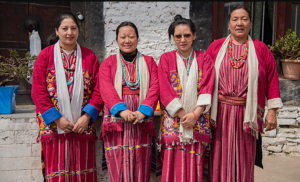
Image – Source
The Monpa tribe, residing primarily in the Tawang and West Kameng districts, is known for its vibrant and elegant traditional attire. Their clothing reflects their Buddhist heritage and the cold, mountainous climate of the region.
Monpa men and women wear distinct outfits, especially during festivals like Losar, the Tibetan New Year, where traditional clothing becomes a central feature.
Monpa women often wear woolen gowns called Shingka, accompanied by intricately woven belts, while the men wear Gale, a thick woolen garment.
The wool used is often derived from yak, providing both warmth and durability, making the attire functional in the harsh winters.
- Men’s Attire: Woolen Gale, knee-length boots, and traditional headgear.
- Women’s Attire: Shingka gown, handwoven belts, silver jewelry.
- Key Accessories: Bead necklaces, silver ornaments, and woolen hats.
- Occasions: Losar, marriages, and harvest festivals.
Monpa Traditional Dress Details
| Aspect | Details |
| Dress Name | Shingka (Women), Gale (Men) |
| Tribal Group | Monpa |
| Main Colors | Dark tones like black, deep blue, with red or yellow belts |
| Materials | Wool, especially yak wool |
| Key Features | Handwoven belts, intricate beadwork, silver jewelry |
| Cultural Importance | Reflects Buddhist influence; worn during Losar and other festivals |
| Occasions | Losar, weddings, and community gatherings |
| Accessories | Silver jewelry, bead necklaces, woolen hats |
| Craftsmanship | Handcrafted using yak wool for warmth |
| Comfort & Practicality | Durable and warm, suitable for high-altitude weather |
| Gender Differences | Men’s simpler Gale vs. Women’s layered Shingka with jewelry |
| Role in Festivals | Losar and harvest celebrations |
2. Sherdukpen Tribe Traditional Dress
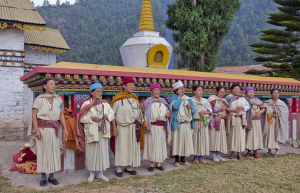
Image – Source
The Sherdukpen tribe, primarily found in West Kameng, has a rich heritage. Their traditional clothing plays a central role in festivals like Choskar.
Sherdukpen men wear woolen garments called Pehkan, which offer warmth in the region’s cool climate, while the women don intricately designed attire, often featuring bright colors and elaborate beadwork.
Sherdukpen traditional attire is adorned with unique geometric patterns, often symbolizing tribal mythology. The Sherdukpen hat, a significant accessory, is worn by men and women during cultural events.
- Men’s Attire: Pehkan woolen cloak and headgear with intricate designs.
- Women’s Attire: Colorful dresses with woven patterns and bead necklaces.
- Key Accessories: Bamboo hats, silver ornaments, and heavy beadwork.
- Occasions: Choskar, community gatherings, and marriage ceremonies.
Sherdukpen Traditional Dress Details
| Aspect | Details |
| Dress Name | Pehkan (Men), Traditional woven dresses (Women) |
| Tribal Group | Sherdukpen |
| Main Colors | Bright colors like red, orange, yellow, and green |
| Materials | Wool, silk, and cotton |
| Key Features | Geometric woven patterns, colorful designs, traditional hats |
| Cultural Importance | Symbolic of tribal mythology; worn during Choskar and significant events |
| Occasions | Choskar, weddings, and harvest festivals |
| Accessories | Beaded necklaces, silver ornaments, bamboo hats |
| Craftsmanship | Handcrafted with intricate detailing |
| Comfort & Practicality | Suitable for both warm and cold weather |
| Gender Differences | Women’s attire is more colorful and detailed, while men wear simpler designs |
| Role in Festivals | Worn during Choskar, community festivals, and tribal rituals |
3. Nyishi Tribe Traditional Clothing
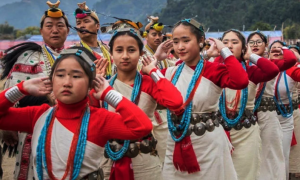
Image – Source
Nyishi, the largest tribe in Arunachal Pradesh, has a distinct traditional dress that reflects their warrior heritage. The Nyishi men are known for their bamboo Bopia hats adorned with animal feathers, often worn with a simple cotton garment called Kupaan. Women, on the other hand, wear elaborate handwoven skirts and tops.
The Nyishi clothing is designed for practicality and status, with men’s attire often highlighting their role as protectors. Women’s dresses are more colorful and are worn during festivals like Nyokum, where they celebrate agricultural prosperity.
- Men’s Attire: Kupaan cotton wrap, bamboo hats with feathers.
- Women’s Attire: Handwoven skirts, colorful shawls, silver jewelry.
- Key Accessories: Bamboo hats, bead necklaces, silver earrings.
- Occasions: Nyokum festival, weddings, and harvest celebrations.
Nyishi Traditional Dress Details
| Aspect | Details |
| Dress Name | Kupaan (Men), Traditional skirts (Women) |
| Tribal Group | Nyishi |
| Main Colors | Earthy tones with vibrant reds and yellows |
| Materials | Cotton, handwoven fabrics |
| Key Features | Bamboo hats with feathers, handwoven skirts |
| Cultural Importance | Reflects warrior heritage; worn during Nyokum and agricultural festivals |
| Occasions | Nyokum, weddings, and community rituals |
| Accessories | Beaded necklaces, silver earrings, bamboo hats |
| Craftsmanship | Locally made, with emphasis on durability and practicality |
| Comfort & Practicality | Lightweight and breathable, suitable for various terrains |
| Gender Differences | Men’s clothing is simpler, while women wear colorful handwoven skirts |
| Role in Festivals | Key part of Nyokum celebrations |
4. Apatani Tribe Fashion

Image – Source
The Apatani tribe, known for their distinctive facial tattoos and nose plugs, also showcases unique traditional clothing, particularly during festivals like Dree.
Apatani women wear long, dark woolen garments called Pehkan, while men wear more straightforward wraps paired with bamboo hats.
Apatani clothing is characterized by its practicality and simplicity, often made from cotton or wool. Their attire’s geometric patterns and handwoven details reflect the tribe’s deep connection to nature and agricultural practices.
- Men’s Attire: Simple cotton or woolen wraps, bamboo hats.
- Women’s Attire: Pehkan gowns, bead necklaces, silver ornaments.
- Key Accessories: Nose plugs, bead necklaces, traditional belts.
- Occasions: Dree festival, weddings, and agricultural celebrations.
Apatani Traditional Dress Details
| Aspect | Details |
| Dress Name | Pehkan (Women), Cotton wraps (Men) |
| Tribal Group | Apatani |
| Main Colors | Dark colors, often blue or black |
| Materials | Wool, cotton |
| Key Features | Geometric patterns, beadwork, facial tattoos |
| Cultural Importance | Tied to agricultural celebrations and worn during Dree festival |
| Occasions | Dree festival, weddings, and harvest festivals |
| Accessories | Bead necklaces, nose plugs, traditional belts |
| Craftsmanship | Handwoven and often passed down through generations |
| Comfort & Practicality | Practical and durable for everyday use |
| Gender Differences | Men wear simpler wraps, while women’s clothing is more elaborate |
| Role in Festivals | Crucial for Dree festival and community celebrations |
5. Galo Tribe Traditional Dress
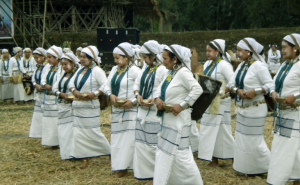
Image – Source
The Galo tribe, primarily found in West Siang district, is known for their colorful handwoven attire, especially during festivals like Mopin, a celebration of harvest and fertility.
Galo men wear a simple wrap-around garment, while women wear a more elaborate skirt and shawl combination called Sige.
The Galo traditional dress emphasizes their rich handloom culture. Each garment features detailed patterns and symbols that reflect their connection to nature and tribal mythology. Women’s dresses are often paired with beaded jewelry and woven belts.
- Men’s Attire: Cotton wrap-around cloth with minimal patterns.
- Women’s Attire: Sige skirt with matching shawl and belts.
- Key Accessories: Beaded jewelry, silver ornaments, and headgear.
- Occasions: Mopin festival, weddings, and harvest celebrations.
Galo Traditional Dress Details
| Aspect | Details |
| Dress Name | Sige (Women), Cotton wraps (Men) |
| Tribal Group | Galo |
| Main Colors | Earthy tones, with accents of bright Green and White |
| Materials | Cotton, wool |
| Key Features | Handwoven patterns, bright colors, beadwork |
| Cultural Importance | Reflects Galo culture and spirituality; worn during Mopin |
| Occasions | Mopin festival, community gatherings |
| Accessories | Beaded necklaces, silver ornaments, woven belts |
| Craftsmanship | Handcrafted by local artisans |
| Comfort & Practicality | Comfortable for everyday use and well-suited for festive occasions |
| Gender Differences | Women’s attire is more elaborate with detailed handwoven patterns |
| Role in Festivals | Key part of Mopin festival attire |
6. Miji Tribe Traditional Wear
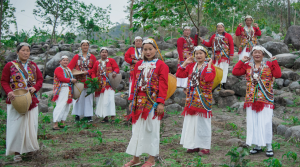
Image – Source
The Miji tribe, residing in the eastern Himalayas, is known for their vibrant traditional clothing, worn during key festivals like Chindang, a harvest celebration.
Miji men wear simple woolen garments, while women’s attire is more colorful, with intricate handwoven patterns and bead necklaces that hold cultural significance.
The Miji traditional wear is made primarily from wool and cotton, with a focus on comfort due to the region’s cold climate. The use of bright colors and geometric designs reflects the tribe’s close ties to their environment and agricultural roots.
- Men’s Attire: Woolen tunics with minimal design elements.
- Women’s Attire: Handwoven skirts and shawls with vibrant patterns.
- Key Accessories: Bead necklaces, silver earrings, and headgear.
- Occasions: Chindang festival, weddings, and community gatherings.
Miji Traditional Dress Details
| Aspect | Details |
| Dress Name | Handwoven skirts (Women), Woolen tunics (Men) |
| Tribal Group | Miji |
| Main Colors | Bright shades like red, orange, and yellow |
| Materials | Wool, cotton |
| Key Features | Handwoven patterns, geometric shapes |
| Cultural Importance | Important during the Chindang festival and reflects agricultural roots |
| Occasions | Chindang festival, marriages, and social rituals |
| Accessories | Beaded necklaces, silver jewelry, woolen headgear |
| Craftsmanship | Handcrafted using traditional looms |
| Comfort & Practicality | Designed for comfort in cold weather |
| Gender Differences | Women’s attire is more elaborate with bright colors, while men’s clothing is simpler |
| Role in Festivals | Essential for Chindang and community festivals |
7. Tagin Tribe Ethnic Clothing
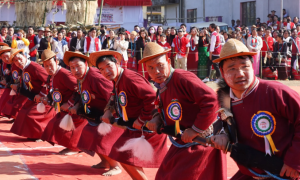
Image – Source
The Tagin tribe, located in Upper Subansiri, has a distinctive traditional dress often worn during their major festival, Si-Donyi. Tagin men wear Kupaan, a traditional cotton wrap, while women don brightly colored skirts and shawls adorned with geometric patterns.
The attire is designed to reflect their connection with nature and spirituality. Men’s clothing symbolizes strength and protection, while women’s dresses focus on fertility and community well-being. Beads and silver accessories further enhance the traditional outfits.
- Men’s Attire: Kupaan cotton wrap, bamboo headgear.
- Women’s Attire: Handwoven skirts and shawls with geometric designs.
- Key Accessories: Silver ornaments, beaded necklaces, and belts.
- Occasions: Si-Donyi festival, weddings, and harvest celebrations.
Tagin Traditional Dress Details
| Aspect | Details |
| Dress Name | Kupaan (Men), Handwoven skirts (Women) |
| Tribal Group | Tagin |
| Main Colors | Bright shades of red, yellow, and green |
| Materials | Cotton, wool |
| Key Features | Geometric patterns, symbolic beadwork |
| Cultural Importance | Reflects their deep spiritual beliefs; worn during Si-Donyi |
| Occasions | Si-Donyi festival, harvest and wedding ceremonies |
| Accessories | Beaded necklaces, silver jewelry, bamboo headgear |
| Craftsmanship | Handcrafted with intricate geometric designs |
| Comfort & Practicality | Warm and comfortable for high-altitude environments |
| Gender Differences | Women wear brighter, more colorful attire, while men’s clothing is simpler |
| Role in Festivals | Crucial for Si-Donyi celebrations |
8. Mishmi Tribe Traditional Dress
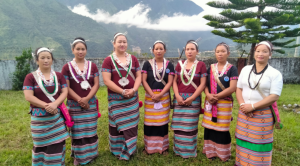
Image – Source
The Mishmi tribe is known for their unique traditional clothing, which is often decorated with intricate embroidery and fur. Both men and women wear layered garments to stay warm in the cold, hilly region.
During festivals like Reh, the Mishmi people showcase their traditional attire, which often features vibrant colors and symbolic motifs.
The Aji-Lhamu dress for women is particularly striking, often paired with silver jewelry and fur capes. Men’s clothing is more straightforward, focusing on functionality and warmth.
- Men’s Attire: Woolen tunics and pants, fur headgear.
- Women’s Attire: Aji-Lhamu dress, layered with fur capes and silver jewelry.
- Key Accessories: Fur capes, silver ornaments, and beaded necklaces.
- Occasions: Reh festival, weddings, and harvest celebrations.
Mishmi Traditional Dress Details
| Aspect | Details |
| Dress Name | Aji-Lhamu (Women), Woolen tunics (Men) |
| Tribal Group | Mishmi |
| Main Colors | Bright red, yellow, and white |
| Materials | Wool, fur, cotton |
| Key Features | Embroidered patterns, fur accessories |
| Cultural Importance | Reflects warmth and durability, worn during the Reh festival |
| Occasions | Reh festival, social gatherings, and marriages |
| Accessories | Fur capes, silver ornaments, bead necklaces |
| Craftsmanship | Handwoven and embroidered by artisans |
| Comfort & Practicality | Designed for warmth and protection in cold climates |
| Gender Differences | Women’s attire includes fur capes and vibrant colors, while men’s clothing is more utilitarian |
| Role in Festivals | Essential for Reh festival attire |
9. Wancho Tribe Clothing
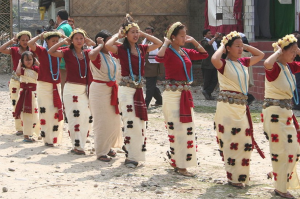
Image – Source
The Wancho tribe of Arunachal Pradesh is known for their bold traditional attire, which is characterized by vibrant colors and intricate beadwork.
Wancho men often wear elaborate headgear and a wrap-around cloth during festivals like Oriah, while women wear brightly colored skirts and shawls adorned with silver jewelry.
Their clothing is symbolic of their warrior heritage, with men’s headgear often featuring animal teeth and feathers. The women’s attire is more colorful and decorative, reflecting their cultural significance in festivals and ceremonies.
- Men’s Attire: Wrap-around cloth with headgear featuring feathers and animal teeth.
- Women’s Attire: Colorful skirts with woven patterns, silver jewelry.
- Key Accessories: Beaded necklaces, silver ornaments, and bamboo hats.
- Occasions: Oriah festival, weddings, and harvest celebrations.
Wancho Traditional Dress Details
| Aspect | Details |
| Dress Name | Wrap-around cloth (Men), Woven skirts (Women) |
| Tribal Group | Wancho |
| Main Colors | Bright shades like red, yellow, and green |
| Materials | Cotton, wool |
| Key Features | Beadwork, intricate woven patterns |
| Cultural Importance | Reflects their warrior heritage; worn during Oriah festival |
| Occasions | Oriah festival, social rituals, and marriages |
| Accessories | Beaded necklaces, silver jewelry, bamboo hats |
| Craftsmanship | Handcrafted with intricate beadwork |
| Comfort & Practicality | Warm and functional for the high-altitude environment |
| Gender Differences | Women wear more elaborate, colorful attire, while men’s clothing is simpler |
| Role in Festivals | Key part of Oriah festival attire |
10. Nocte Tribe Traditional Attire
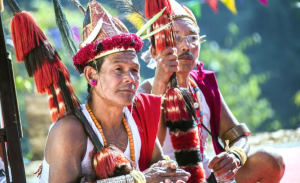
Image – Source
The Nocte tribe, residing in the eastern part of Arunachal Pradesh, is known for their traditional attire that is often worn during festivals like Loku, a celebration of harvest and tribal unity.
Nocte men wear a simple wrap-around garment with a bamboo hat, while women’s attire includes bright skirts and shawls adorned with bead necklaces.
The traditional clothing of the Nocte tribe is designed for both functionality and beauty, with intricate patterns and natural dyes used in their garments. The attire is often paired with jewelry made from beads and silver.
- Men’s Attire: Cotton wrap-around garment with bamboo headgear.
- Women’s Attire: Brightly colored skirts with bead necklaces and shawls.
- Key Accessories: Beaded necklaces, silver ornaments, bamboo hats.
- Occasions: Loku festival, weddings, and harvest celebrations.
Nocte Traditional Dress Details
| Aspect | Details |
| Dress Name | Wrap-around garment (Men), Woven skirts (Women) |
| Tribal Group | Nocte |
| Main Colors | Bright red, yellow, green, and blue |
| Materials | Cotton, wool |
| Key Features | Handwoven patterns, bead necklaces |
| Cultural Importance | Reflects tribal unity and strength; worn during Loku festival |
| Occasions | Loku festival, harvest celebrations, weddings |
| Accessories | Beaded necklaces, silver jewelry, bamboo hats |
| Craftsmanship | Handcrafted using traditional looms |
| Comfort & Practicality | Comfortable for everyday use and well-suited for festive occasions |
| Gender Differences | Women’s clothing is more decorative with bright colors, while men wear simpler garments |
| Role in Festivals | Essential part of Loku festival attire |
Conclusion
The traditional dresses of Arunachal Pradesh are not just garments but living symbols of the state’s rich cultural tapestry and centuries-old craftsmanship.
Each tribe, from the Monpa to the Apatani, weaves its unique story into every fabric, preserving its distinct identity and heritage through these intricate designs.
These attires are more than just aesthetic—they carry deep cultural, spiritual, and social significance, especially during tribal festivals, where they unite communities and showcase pride.
As modern influences seep into daily life, protecting and promoting these traditional dresses becomes increasingly important. They connect to the past, embodying the heart and soul of Arunachal Pradesh’s tribal heritage, and must be cherished for future generations to appreciate and celebrate.
FAQs About Traditional Dress of Arunachal Pradesh
What is the most common traditional dress in Arunachal Pradesh?
Each tribe has its distinct traditional attire, with no single common dress across the state.
How do the traditional dresses of Arunachal Pradesh differ from each other?
The traditional dresses vary significantly in terms of fabric, design, and symbolism based on each tribe’s cultural and environmental influences.
What materials are used to make traditional attire in Arunachal Pradesh?
Wool, cotton, silk, and locally sourced natural fibers are commonly used to create traditional garments.
Why are accessories significant in Arunachal traditional dress?
Accessories like beads, bone jewelry, and headgear symbolize status, tribal identity, and cultural heritage.
How has modernization impacted traditional clothing in Arunachal Pradesh?
While modern clothing is becoming more prevalent, traditional attire is still worn during festivals and ceremonies to preserve cultural identity.
Can tourists wear traditional Arunachal attire during festivals?
Yes, tourists are often encouraged to wear traditional attire during festivals to show respect for the local culture.
What role does handloom weaving play in Arunachal Pradesh’s traditional dress?
Handloom weaving is a critical aspect of Arunachal Pradesh’s traditional attire, representing the craftsmanship and cultural values of the tribes.

